Cel Robertson, Forever Green, UK.
Cel Robertson from Forever Green Flower Company has followed an unconventional path to growing cut flowers. Her firm handle on ideas about sustainability is reflected in her public speaking and her approach to farming flowers.

Please tell us a little about your work history.
I discovered horticulture in a rather unconventional way. At the age of 16, campaigning on a local environmental issue led to an awakening on wider global issues. My first work placements on organic farms were made through connections to people in the environmental movement. Here I learned about the difference between industrialised agriculture and small-scale farms, and how it was possible for agriculture to work for the benefit of biodiversity and the environment as well as people. I worked at a couple of places where seasonal, organic food was grown for local customers, and that ethos has really stuck with me throughout my life.
I trained at horticultural college and worked as a garden designer for many years, but after a relocation from London to Norfolk I made a career change and began growing seasonal cut flowers. Key to this change of direction was the knowledge that although floristry appears to emulate nature, cut flower production and floristry processes can be some of the most damaging to our planet – and at the time, these particular issues weren’t widely known or shared with the general public. I wanted to be part of a positive, sustainable change in the industry.
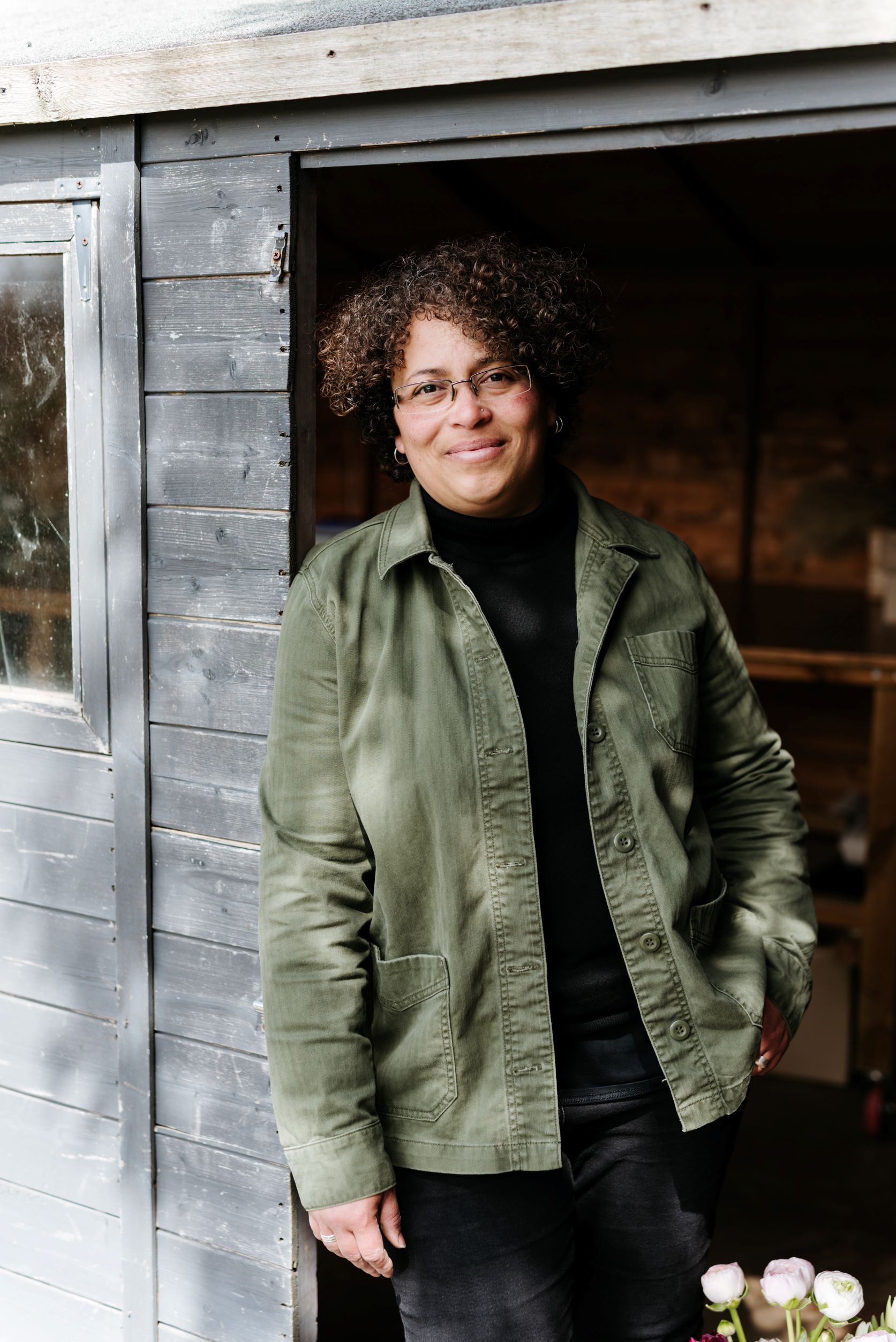

COVID has had a huge impact on florists all over the world. What kind of impact has this had on your own circumstances and work situation? What are you currently doing?
In the UK, Covid restrictions came into force towards the end of March 2020 which was right at the start of the growing season for cut-flower growers. With more than half of my business tied up with wholesale supply to florists, the cancellation of all wedding work hit us hard. It also meant no on-farm sales or workshops. Many growers had to pivot their businesses to stay afloat; I was able to start a seasonal flower subscription service which I have continued with, and I was able to increase sales to the shops that I supply. We expanded our gift bouquet delivery service which helped to keep us going, but it was a hard year for the business that I wouldn’t want to repeat! We worked harder than ever to sell as many flowers as possible, but that couldn’t quite make up for the loss of the florists’ orders for wedding work. Rising costs have hit growers as well, which has made a difficult situation even more challenging.
2021 and 2022 brought further challenges with our florists catching up with all of the wedding cancelled in 2020 – in addition to the weddings already booked for those years! The workload has been crazy over the past couple of years, but I’m pleased to say that the business has been resilient enough to cope – and thrive – and demand for our seasonal flowers is growing.


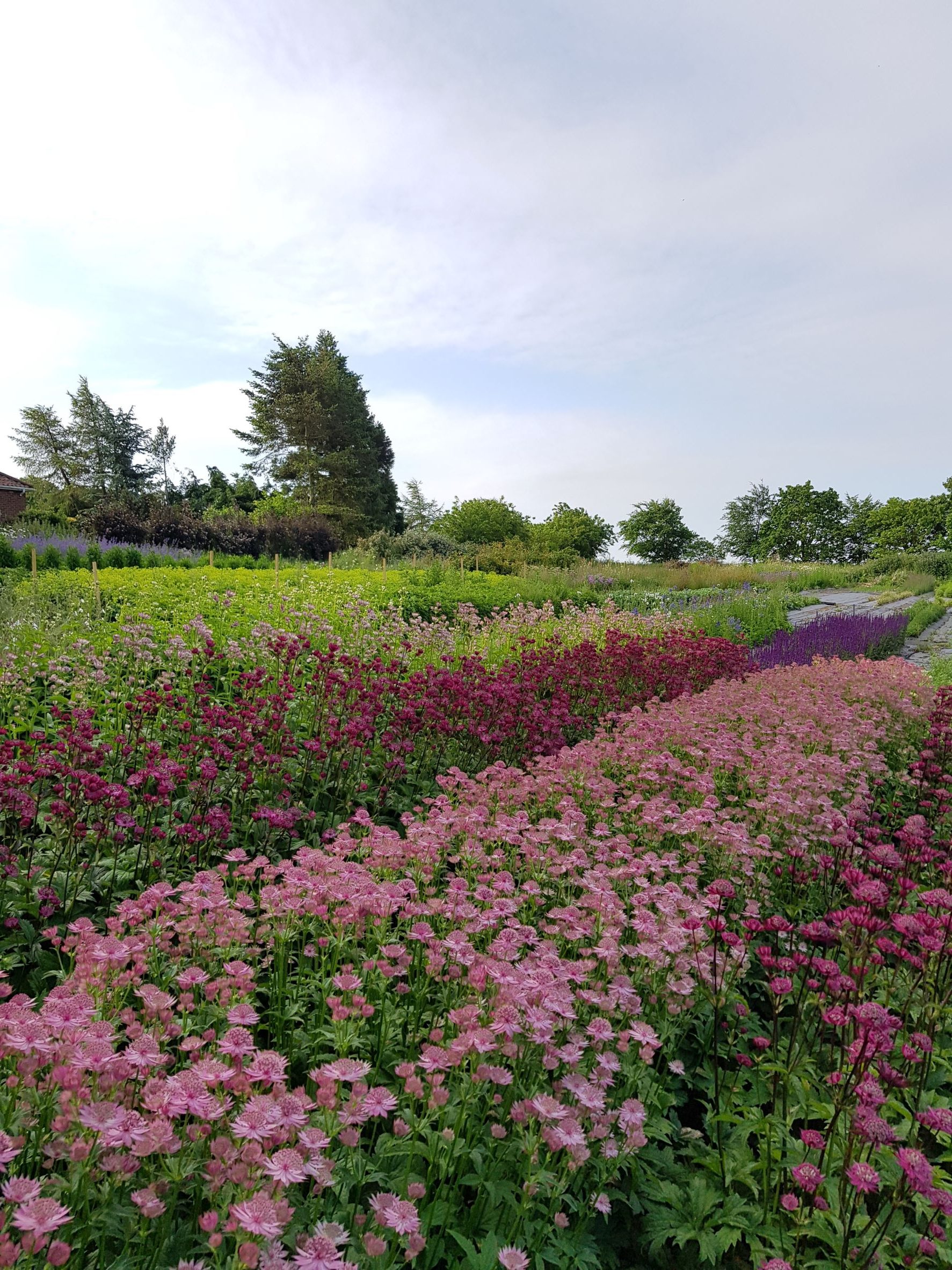
What part of the job brings you the most satisfaction/joy/inspiration?
I love the process of growing a quality crop – from sowing the seed to cutting the first few flowering stems – and every new challenge is a learning opportunity. Honestly, I wouldn’t want to be anywhere else than working with the soil and growing plants – even when it’s pouring with rain! I’m my own boss, and it gives me great satisfaction to see my customers so happy with the flowers I’ve grown for them. My biggest work highlight to date has to be having my book Cut Flowers published in April 2022.
I think there is a real disconnect between a grower’s reality and the portrayal of flower farmers on social media. This isn’t just about growing lovely flowers – it requires a business mindset. The hours are long and the work is physically and mentally hard, and you have to be an entrepreneur as much as a grower in order to make it pay.

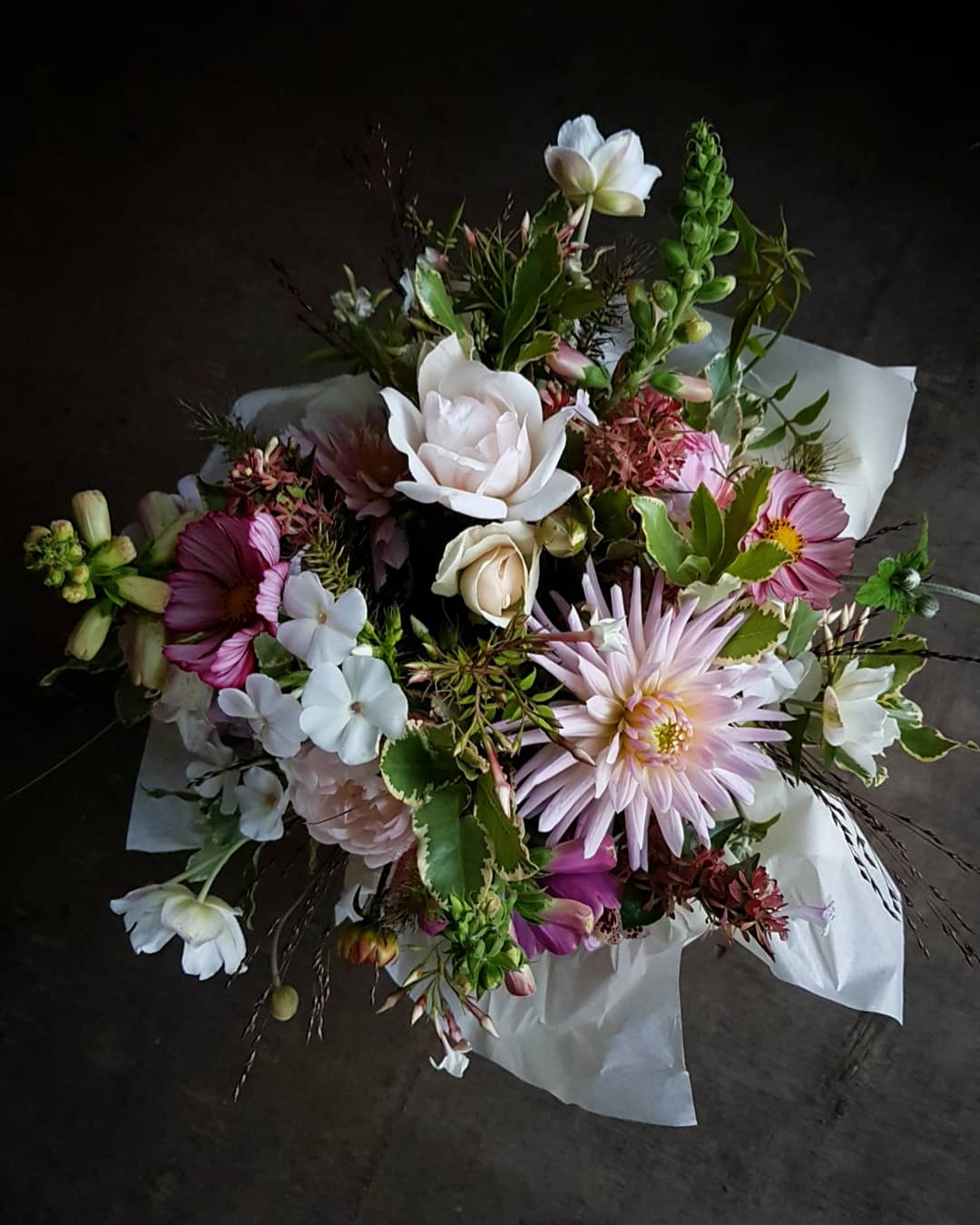
Social media has had a huge impact on floristry. What do you think the main impacts have been and do you think these are positive or negative?
Social media can be a useful tool for promotion and engagement with your customers and followers; it’s certainly been a critical factor in the rising popularity of the Slow Flowers movement in recent years. At the same time it can feel a bit like a battleground when confronted by the huge levels of greenwashing in the floristry industry. Social media is a space where there isn’t any accountability, and that’s certainly a concern.



The word ‘sustainability’ in floristry is getting a good run – what does sustainability mean to you in relation to your business practice?
Sustainability is the latest buzzword all over social media, but it holds a deeper meaning for my business. The three pillars of sustainability – people, planet, profit – all have to be balanced so that the business develops in a sustainable way. There is no end point to sustainability and there are many elements that need improvement in my business, but I am always working on that pathway of continuous improvement. Some examples of how I apply this in my business practice include:
- Paying people a fair wage for their labour – even if they are just coming to do a couple of days ‘work experience’ on the farm. Surely part of work experience is getting paid? Too many profit-driven small farms use voluntary labour on an ad hoc or regular basis; unpaid labour is exploitative, and does not reflect the viability of the business or any sort of ethical consideration.
- We grow in a fairly intensive system, but we work hard to cultivate our crops in a more regenerative and less extractive way. Minimal tillage in order to prevent too much disturbance of the soil is one of the techniques we use on our flower farm – this helps to maintain the diversity of the soil life whilst also retaining as much carbon in the soil as possible. This helps to keep the carbon footprint of our product as low as possible.
- Our profits are not generated by processes that trash our planet, and a percentage of those profits is allocated onwards to local social and environmental charities.

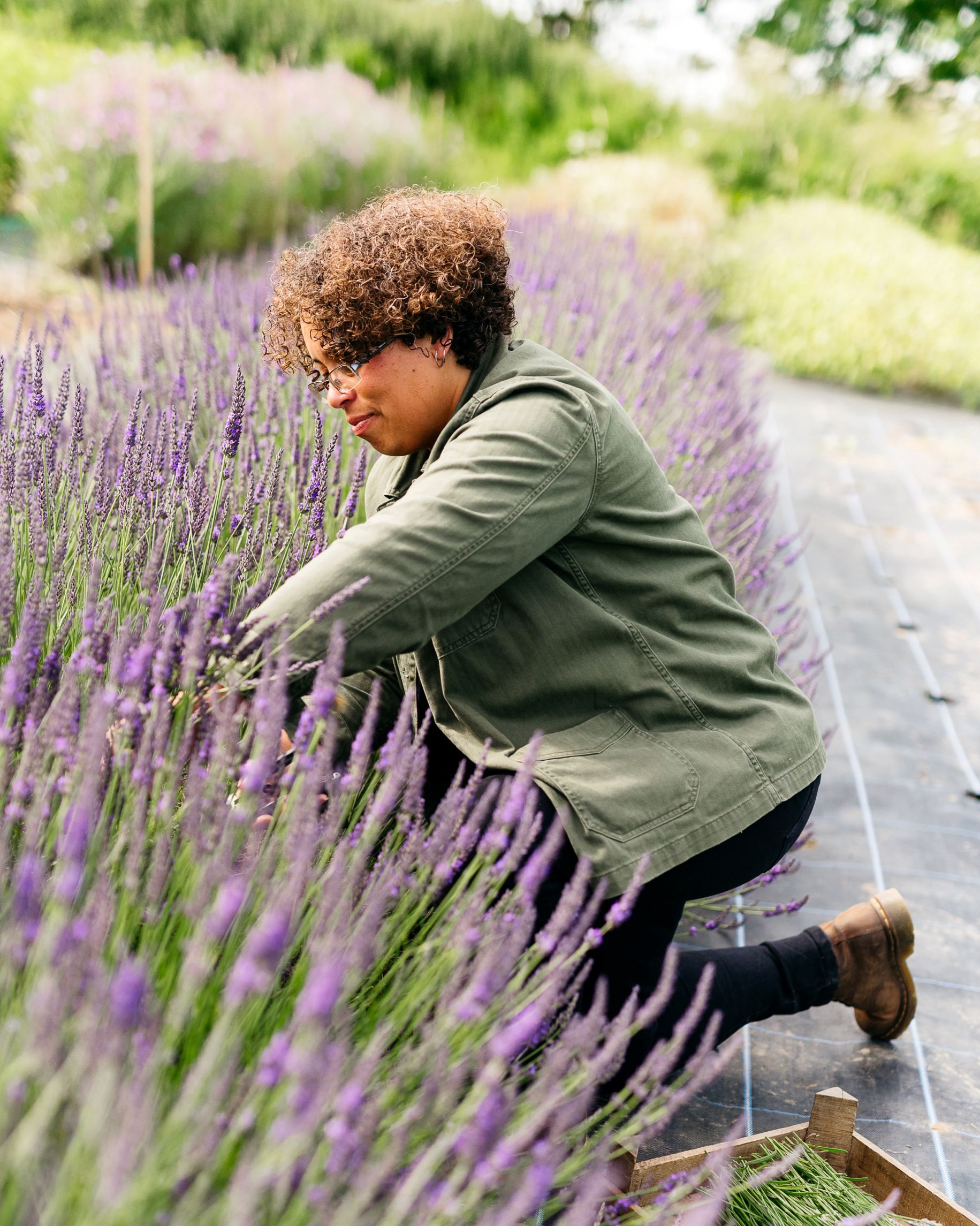
What’s in your toolbox?
- Barnel needlenose secateurs – the perfect, lightweight tool for cutting!
- My spreadsheets – an essential planning tool for a grower.
- My Makita site radio – the first thing to be switched on in the workshop each morning!
- Landscape fabric – whilst I have conflicting feelings about this, I couldn’t run my business without it – essential for weed control.
- Polytunnel – necessary for protecting early- and late-flowering crops.
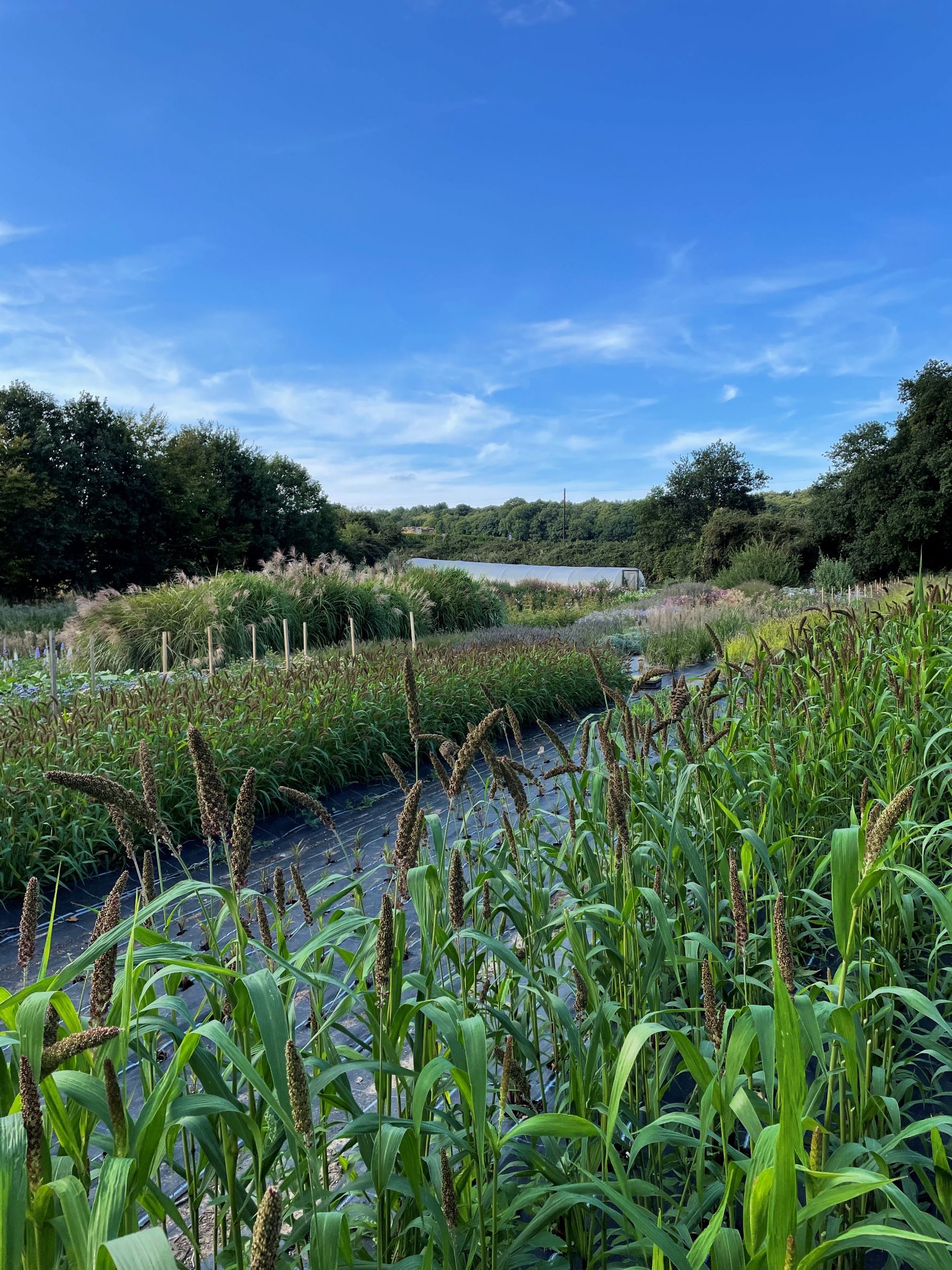

What attitudes do you think need to change – for both florists and consumers – taking into consideration the SFN Design and Business Principles?
Education is the key to change. This applies to everyone in the industry as well as consumers. It has to start with the industry, and particularly with florists as they are the customer-facing element of the industry. Florists need to work with the ‘design for the planet’ principle foremost in their minds, and we all need to work with our customers to show them how floristry can be more sustainable.
Seasonality is the first step to sustainability, and floristry colleges should be leading their teaching with this – in my experience this just isn’t taught, which isn’t surprising given the way the global industry operates. But there is also a real issue with the availability of good quality seasonal, locally-grown material – there simply are not enough growers able to supply high quality product with consistency and at scale. We also need to work to improve access to land and to upskill growers so we can meet the growing demand for local, seasonal flowers – without a consistent supply of floral material from good growers, the florists won’t be able to make the change required either.

